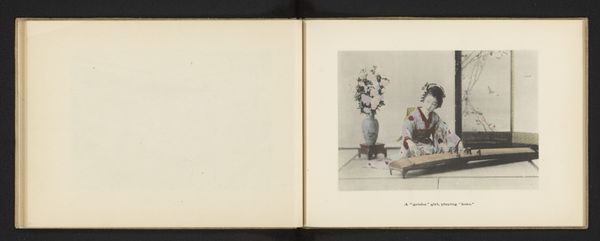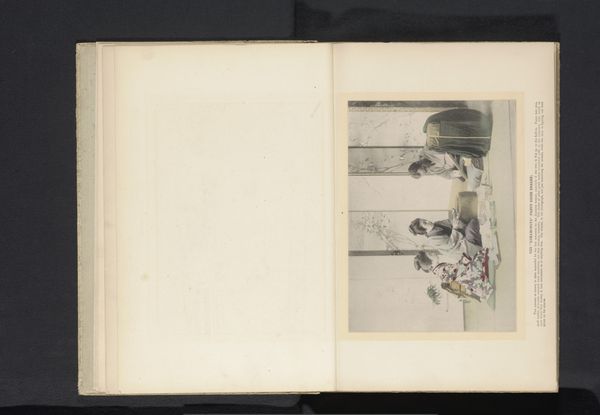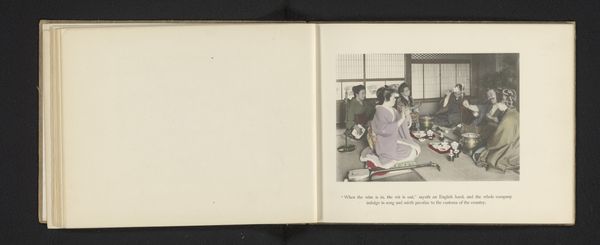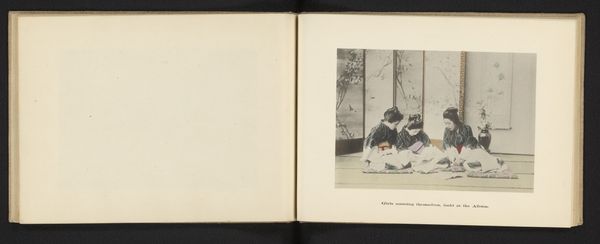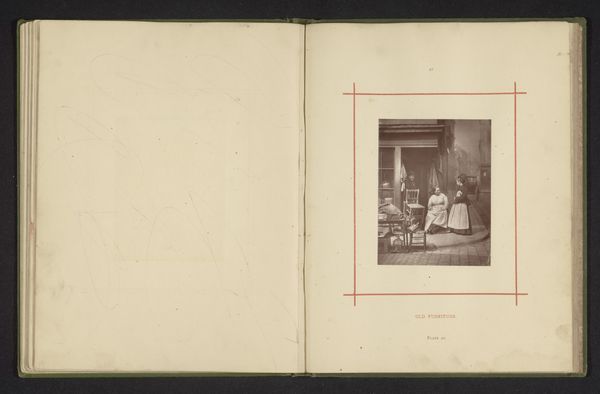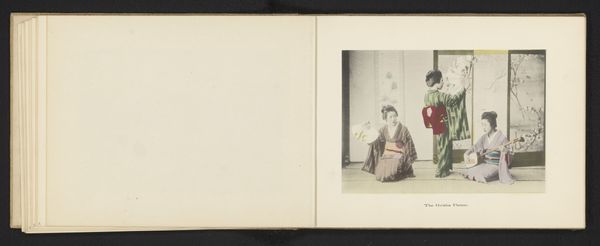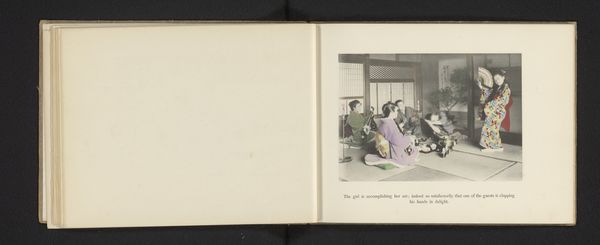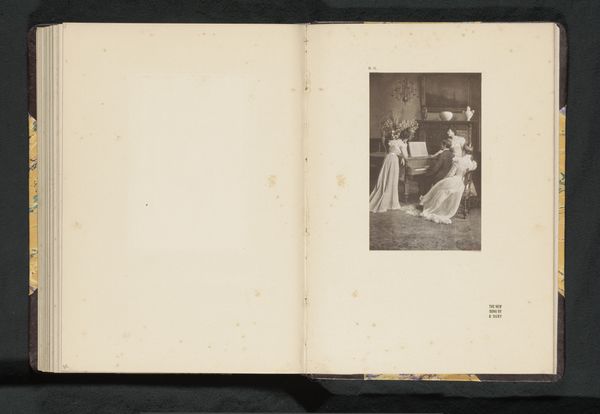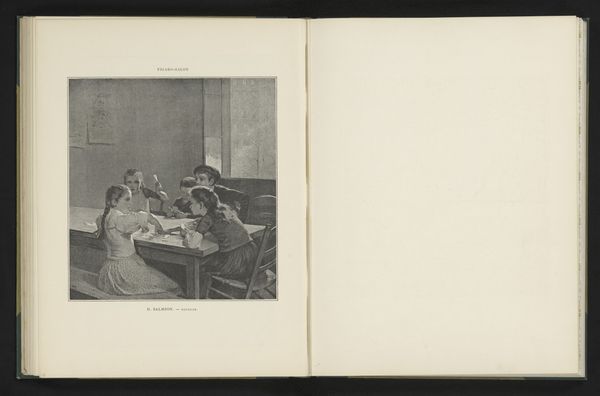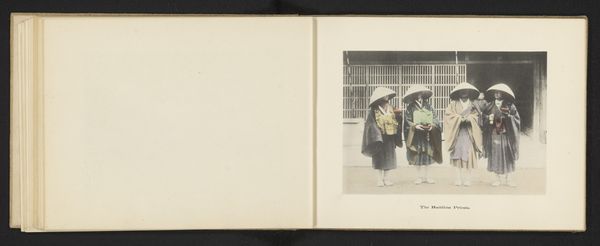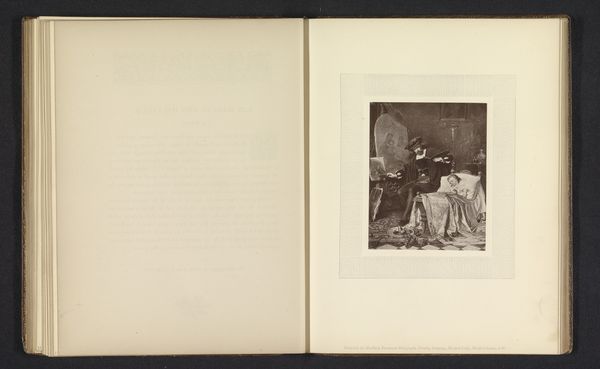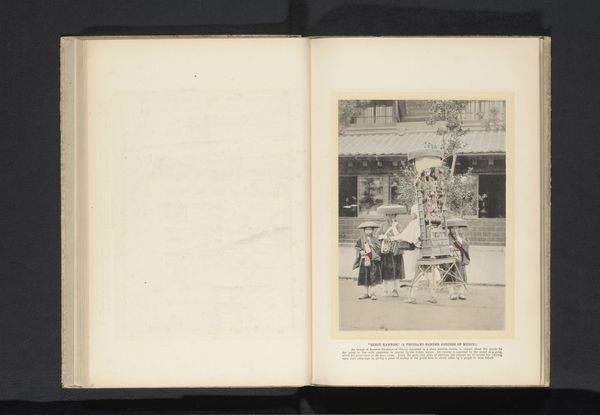
Vier Japanse vrouwen in traditionele kleding die muziek maken en een spel spelen c. 1895 - 1905
0:00
0:00
Dimensions: height 105 mm, width 150 mm
Copyright: Rijks Museum: Open Domain
Editor: Here we have “Four Japanese Women in Traditional Clothing Making Music and Playing a Game” circa 1895 to 1905, by Kōzaburō Tamamura. The scene feels intimate, like a peek into a private gathering. What sort of stories do you see in this piece? Curator: The stories here whisper through carefully chosen symbols. Note the placement of these women – enclosed yet exposed through the open sketchbook layout. It speaks volumes about the era’s perception of women in society: visible yet confined to specific roles. See the musical instruments and the game; these aren't merely leisure activities. They signify cultural refinement, artistic accomplishment – virtues expected of women during that period. How do these objects reflect back the identity of women and girls in Japan at the time? Editor: So the image isn't just showing us a scene, but telling us something about the people in it through symbols... I see what you mean. Curator: Precisely. Even the traditional clothing contributes; each kimono pattern carries symbolic weight, denoting family status, personal taste, perhaps even hidden allegiances. These symbols create layers, demanding closer inspection. Consider the emotional implications of a 'game' when class dynamics are a core feature of a feudal system? Does the artist critique it or support it, do you think? Editor: Hmmm, that's not something I initially considered. Perhaps it's showing us the prescribed life and roles these women lived. I definitely see more depth to it now! Curator: Exactly. Images invite dialogue; meanings aren't fixed, they shift based on what we bring to them. Editor: This makes me think about how symbols change over time. Thanks for helping me unpack this, I see it differently now!
Comments
No comments
Be the first to comment and join the conversation on the ultimate creative platform.
